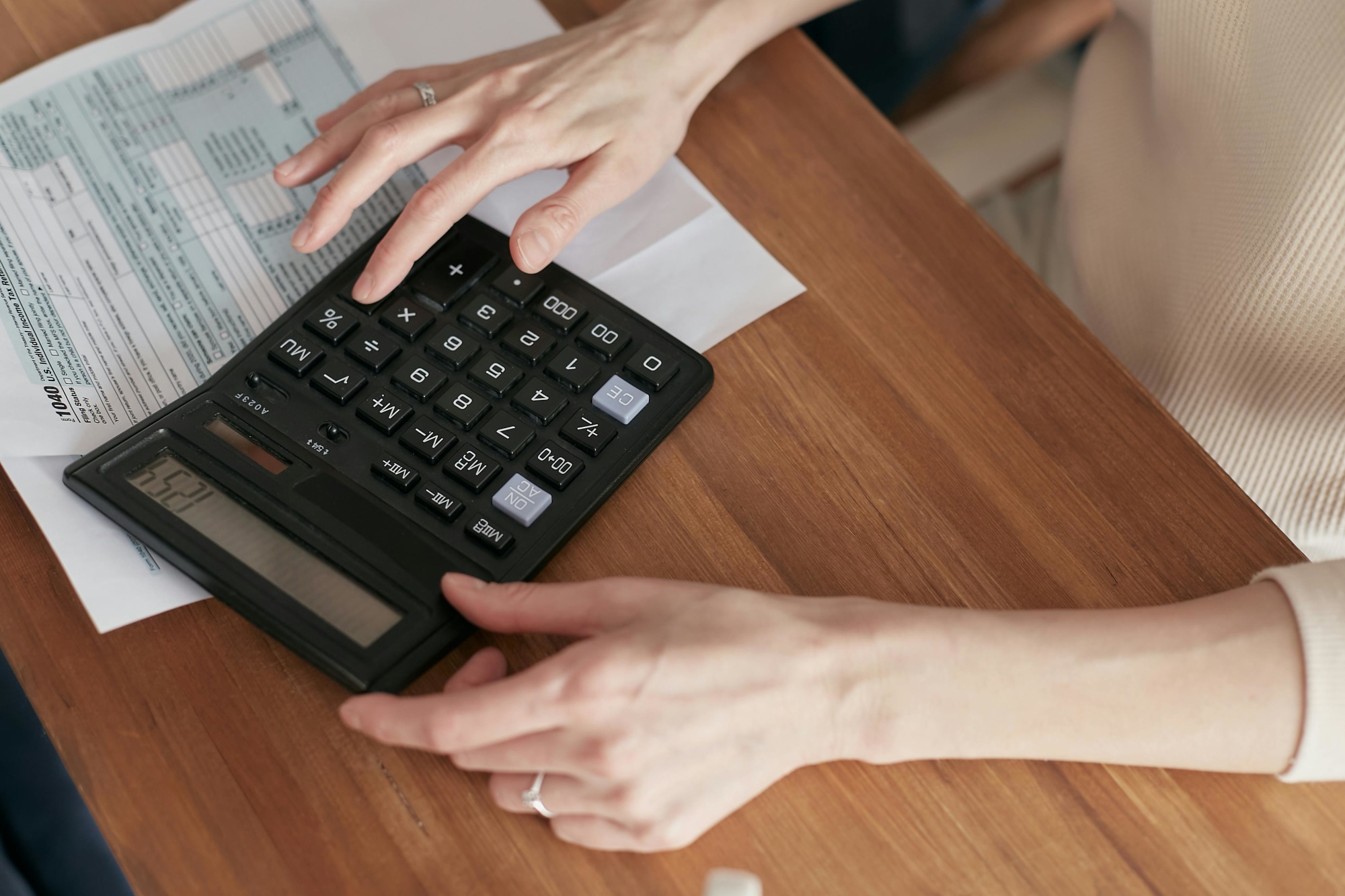Retirement
What happens to superannuation when leaving Australia?
Superannuation was established to help secure the retirement benefits of working Australians through employer salary guarantee and voluntary contributions. The Australian Taxation Office (ATO) has made superannuation early withdrawal prohibited, but there are limited circumstances where you can get early access to your super, including severe financial hardship, terminal medical condition, and if you plan to leave Australia for good.
Nest Egg discusses what you need to know about claiming your superannuation when leaving Australia permanently.
Can I get my superannuation when I leave Australia?
According to the ATO, you can legally withdraw all your super contributions by filing a Departing Australia Superannuation Payment (DASP) form. However, you are not eligible to file for DASP if you are an Australian citizen or holding a permanent resident visa.
Filing for DASP is only for residents who had worked in Australia and/or accumulated superannuation while on a temporary resident visa (e.g.. subclass 147, 400, 485, etc). New Zealand citizens and holders of investor retirement visa (subclass 405) and retirement visa (subclass 410) are excluded from this definition.
Temporary residents who are leaving Australia permanently to go back to their home country or elsewhere are eligible for DASP. They may request their funds or the ATO to release their super contributions by filing the necessary forms once they have left Australia.
What if I am an Australian citizen or permanent resident?
If you hold Australian citizenship or have a permanent resident visa, however, you can’t withdraw your superannuation when moving overseas. Even if you give up your residency status or renounce your Australian citizenship, you will not be granted early access to your super.
However, if you are a permanent resident or citizen planning to reside in New Zealand permanently, you have two options for your super:
Leave your super in Australia and wait until you retire or satisfy a condition of release
Transfer your super to a New Zealand KiwiSaver scheme
The second option is allowed under the Trans-Tasman Retirement Savings Portability Scheme, which was enforced beginning 1 July 2013. However, it only permits transfers between an Australian Prudential Regulation Authority (APRA) regulated fund and a KiwiSaver Scheme. Self-managed super fund (SMSF) transfers are not permitted.
You must also learn the laws surrounding the KiwiSaver scheme because it follows a different set of rules from the Australian superannuation system.
When can I withdraw my superannuation?
You cannot process the withdrawal of your super while your temporary resident visa is active. This means that you can fill out the DASP online form in preparation for your departure, but you may only submit through the DASP online application system once you have already left Australia.
You may apply for DASP with your super fund within six months from your departure. If you fail to do so and your visa has already expired, your fund will forward your super contributions to ATO as unclaimed super.
You must also submit copies of certified documents, such as a copy of your passport identification page and cancelled temporary visa. There are also additional documents required if you have $5,000 or more in your super.
There are certain limitations on who can certify the required documents, so the ATO recommends processing certifications prior to leaving Australia.
Your super will be released within 28 days of lodging a complete DASP application and the required documents that serve as proof that you are overseas.
How much tax do I pay on super when leaving Australia?
Filing for DASP has some tax implications that will depend on the type of residency or visa you hold.
As of 1 July 2017, the DASP ordinary tax rate of 35 per cent is applied to the taxed element, while the untaxed element is taxed at 45 per cent. For visa subclass 417 and 462 holders, the DASP WHM tax rate of 65 per cent will apply to the entire taxable component of your super, whether taxed or untaxed.
The DASP payment doesn’t form part of your assessable income since it has a separate tax treatment. DASP payments don’t count as part of your assessable income, so make sure that it’s not reflected in your final tax return.
Can a representative file for DASP?
The ATO allows applicants to authorise a representative or tax agent to claim DASP payments on their behalf.
Note that the tax agent must be registered with the Tax Practitioners Board for the purpose of claiming DASP.
What happens to superannuation when leaving Australia?
Superannuation was established to help secure the retirement benefits of working Australians through employer salary guarantee and voluntary contributions. The Australian Taxation Office (ATO) has made superannuation early withdrawal prohibited, but there are limited circumstances where you can get early access to your super, including severe financial hardship, terminal medical condition, and if you plan to leave Australia for good.
Nest Egg discusses what you need to know about claiming your superannuation when leaving Australia permanently.
Can I get my superannuation when I leave Australia?
According to the ATO, you can legally withdraw all your super contributions by filing a Departing Australia Superannuation Payment (DASP) form. However, you are not eligible to file for DASP if you are an Australian citizen or holding a permanent resident visa.
Filing for DASP is only for residents who had worked in Australia and/or accumulated superannuation while on a temporary resident visa (e.g.. subclass 147, 400, 485, etc). New Zealand citizens and holders of investor retirement visa (subclass 405) and retirement visa (subclass 410) are excluded from this definition.
Temporary residents who are leaving Australia permanently to go back to their home country or elsewhere are eligible for DASP. They may request their funds or the ATO to release their super contributions by filing the necessary forms once they have left Australia.
What if I am an Australian citizen or permanent resident?
If you hold Australian citizenship or have a permanent resident visa, however, you can’t withdraw your superannuation when moving overseas. Even if you give up your residency status or renounce your Australian citizenship, you will not be granted early access to your super.
However, if you are a permanent resident or citizen planning to reside in New Zealand permanently, you have two options for your super:
Leave your super in Australia and wait until you retire or satisfy a condition of release
Transfer your super to a New Zealand KiwiSaver scheme
The second option is allowed under the Trans-Tasman Retirement Savings Portability Scheme, which was enforced beginning 1 July 2013. However, it only permits transfers between an Australian Prudential Regulation Authority (APRA) regulated fund and a KiwiSaver Scheme. Self-managed super fund (SMSF) transfers are not permitted.
You must also learn the laws surrounding the KiwiSaver scheme because it follows a different set of rules from the Australian superannuation system.
When can I withdraw my superannuation?
You cannot process the withdrawal of your super while your temporary resident visa is active. This means that you can fill out the DASP online form in preparation for your departure, but you may only submit through the DASP online application system once you have already left Australia.
You may apply for DASP with your super fund within six months from your departure. If you fail to do so and your visa has already expired, your fund will forward your super contributions to ATO as unclaimed super.
You must also submit copies of certified documents, such as a copy of your passport identification page and cancelled temporary visa. There are also additional documents required if you have $5,000 or more in your super.
There are certain limitations on who can certify the required documents, so the ATO recommends processing certifications prior to leaving Australia.
Your super will be released within 28 days of lodging a complete DASP application and the required documents that serve as proof that you are overseas.
How much tax do I pay on super when leaving Australia?
Filing for DASP has some tax implications that will depend on the type of residency or visa you hold.
As of 1 July 2017, the DASP ordinary tax rate of 35 per cent is applied to the taxed element, while the untaxed element is taxed at 45 per cent. For visa subclass 417 and 462 holders, the DASP WHM tax rate of 65 per cent will apply to the entire taxable component of your super, whether taxed or untaxed.
The DASP payment doesn’t form part of your assessable income since it has a separate tax treatment. DASP payments don’t count as part of your assessable income, so make sure that it’s not reflected in your final tax return.
Can a representative file for DASP?
The ATO allows applicants to authorise a representative or tax agent to claim DASP payments on their behalf.
Note that the tax agent must be registered with the Tax Practitioners Board for the purpose of claiming DASP.

Superannuation was established to help secure the retirement benefits of working Australians through employer salary guarantee and voluntary contributions. The Australian Taxation Office (ATO) has made superannuation early withdrawal prohibited, but there are limited circumstances where you can get early access to your super, including severe financial hardship, terminal medical condition, and if you plan to leave Australia for good.
Nest Egg discusses what you need to know about claiming your superannuation when leaving Australia permanently.
Can I get my superannuation when I leave Australia?
According to the ATO, you can legally withdraw all your super contributions by filing a Departing Australia Superannuation Payment (DASP) form. However, you are not eligible to file for DASP if you are an Australian citizen or holding a permanent resident visa.
Filing for DASP is only for residents who had worked in Australia and/or accumulated superannuation while on a temporary resident visa (e.g.. subclass 147, 400, 485, etc). New Zealand citizens and holders of investor retirement visa (subclass 405) and retirement visa (subclass 410) are excluded from this definition.

Temporary residents who are leaving Australia permanently to go back to their home country or elsewhere are eligible for DASP. They may request their funds or the ATO to release their super contributions by filing the necessary forms once they have left Australia.
What if I am an Australian citizen or permanent resident?
If you hold Australian citizenship or have a permanent resident visa, however, you can’t withdraw your superannuation when moving overseas. Even if you give up your residency status or renounce your Australian citizenship, you will not be granted early access to your super.
However, if you are a permanent resident or citizen planning to reside in New Zealand permanently, you have two options for your super:
Leave your super in Australia and wait until you retire or satisfy a condition of release
Transfer your super to a New Zealand KiwiSaver scheme
The second option is allowed under the Trans-Tasman Retirement Savings Portability Scheme, which was enforced beginning 1 July 2013. However, it only permits transfers between an Australian Prudential Regulation Authority (APRA) regulated fund and a KiwiSaver Scheme. Self-managed super fund (SMSF) transfers are not permitted.
You must also learn the laws surrounding the KiwiSaver scheme because it follows a different set of rules from the Australian superannuation system.
When can I withdraw my superannuation?
You cannot process the withdrawal of your super while your temporary resident visa is active. This means that you can fill out the DASP online form in preparation for your departure, but you may only submit through the DASP online application system once you have already left Australia.
You may apply for DASP with your super fund within six months from your departure. If you fail to do so and your visa has already expired, your fund will forward your super contributions to ATO as unclaimed super.
You must also submit copies of certified documents, such as a copy of your passport identification page and cancelled temporary visa. There are also additional documents required if you have $5,000 or more in your super.
There are certain limitations on who can certify the required documents, so the ATO recommends processing certifications prior to leaving Australia.
Your super will be released within 28 days of lodging a complete DASP application and the required documents that serve as proof that you are overseas.
How much tax do I pay on super when leaving Australia?
Filing for DASP has some tax implications that will depend on the type of residency or visa you hold.
As of 1 July 2017, the DASP ordinary tax rate of 35 per cent is applied to the taxed element, while the untaxed element is taxed at 45 per cent. For visa subclass 417 and 462 holders, the DASP WHM tax rate of 65 per cent will apply to the entire taxable component of your super, whether taxed or untaxed.
The DASP payment doesn’t form part of your assessable income since it has a separate tax treatment. DASP payments don’t count as part of your assessable income, so make sure that it’s not reflected in your final tax return.
Can a representative file for DASP?
The ATO allows applicants to authorise a representative or tax agent to claim DASP payments on their behalf.
Note that the tax agent must be registered with the Tax Practitioners Board for the purpose of claiming DASP.
About the author

About the author


Superannuation
Industry leaders weigh in on concessional super tax as Budget confirms $55bn investment
Changes to the taxation of superannuation earnings and contributions have drawn mixed responses from financial and payroll sector leaders, as the Federal Budget confirms over $55 billion in ...Read more

Superannuation
Call for indexation on super tax cap as $3m threshold draws criticism
A senior executive in the superannuation technology sector has criticised the Federal Government for failing to index the proposed $3 million superannuation tax cap, arguing the measure will unfairly ...Read more

Superannuation
Rest members back calls for fairer superannuation rules ahead of Federal Budget
Rest has called on the Federal Government to implement superannuation reforms aimed at improving fairness across the system, after member survey results showed strong support for a range of proposed ...Read more

Superannuation
Rest welcomes progress on ‘Payday Super’ reform
Rest, one of Australia’s largest profit-to-member superannuation funds, has welcomed the Australian Government’s release of draft ‘Payday Super’ legislation, which aims to align Superannuation ...Read more

Superannuation
SuperAPI and Humanforce partner to improve superannuation compliance for one million Australians
Superannuation engagement platform SuperAPI has partnered with human capital management provider Humanforce to streamline payroll and superannuation contributions for more than one million Australian ...Read more

Superannuation
Rest super fund reports 11.19 per cent return for 2024
Rest superannuation fund delivered an 11.19 per cent return in its MySuper Growth investment option for calendar year 2024, marking two consecutive years of positive returns. Read more

Superannuation
Actuaries propose three-tier superannuation tax reform
The Actuaries Institute has outlined major reforms to Australia's $4.1 trillion superannuation system, proposing uniform tax rates and new levies on high retirement withdrawals. Read more

Superannuation
Survey reveals Australians' reliance on superannuation for retirement
A new survey by AustralianSuper has found that only 32% of Australians believe they could save for retirement without compulsory superannuation. Read more

Superannuation
Industry leaders weigh in on concessional super tax as Budget confirms $55bn investment
Changes to the taxation of superannuation earnings and contributions have drawn mixed responses from financial and payroll sector leaders, as the Federal Budget confirms over $55 billion in ...Read more

Superannuation
Call for indexation on super tax cap as $3m threshold draws criticism
A senior executive in the superannuation technology sector has criticised the Federal Government for failing to index the proposed $3 million superannuation tax cap, arguing the measure will unfairly ...Read more

Superannuation
Rest members back calls for fairer superannuation rules ahead of Federal Budget
Rest has called on the Federal Government to implement superannuation reforms aimed at improving fairness across the system, after member survey results showed strong support for a range of proposed ...Read more

Superannuation
Rest welcomes progress on ‘Payday Super’ reform
Rest, one of Australia’s largest profit-to-member superannuation funds, has welcomed the Australian Government’s release of draft ‘Payday Super’ legislation, which aims to align Superannuation ...Read more

Superannuation
SuperAPI and Humanforce partner to improve superannuation compliance for one million Australians
Superannuation engagement platform SuperAPI has partnered with human capital management provider Humanforce to streamline payroll and superannuation contributions for more than one million Australian ...Read more

Superannuation
Rest super fund reports 11.19 per cent return for 2024
Rest superannuation fund delivered an 11.19 per cent return in its MySuper Growth investment option for calendar year 2024, marking two consecutive years of positive returns. Read more

Superannuation
Actuaries propose three-tier superannuation tax reform
The Actuaries Institute has outlined major reforms to Australia's $4.1 trillion superannuation system, proposing uniform tax rates and new levies on high retirement withdrawals. Read more

Superannuation
Survey reveals Australians' reliance on superannuation for retirement
A new survey by AustralianSuper has found that only 32% of Australians believe they could save for retirement without compulsory superannuation. Read more








